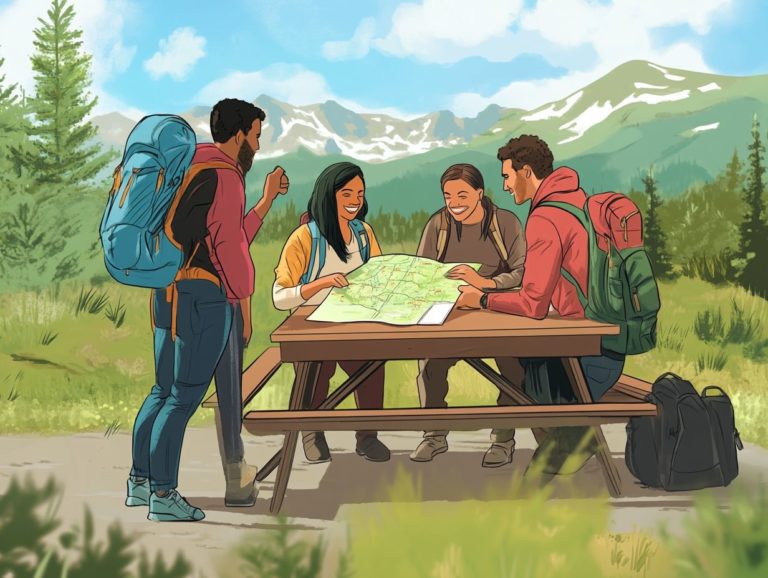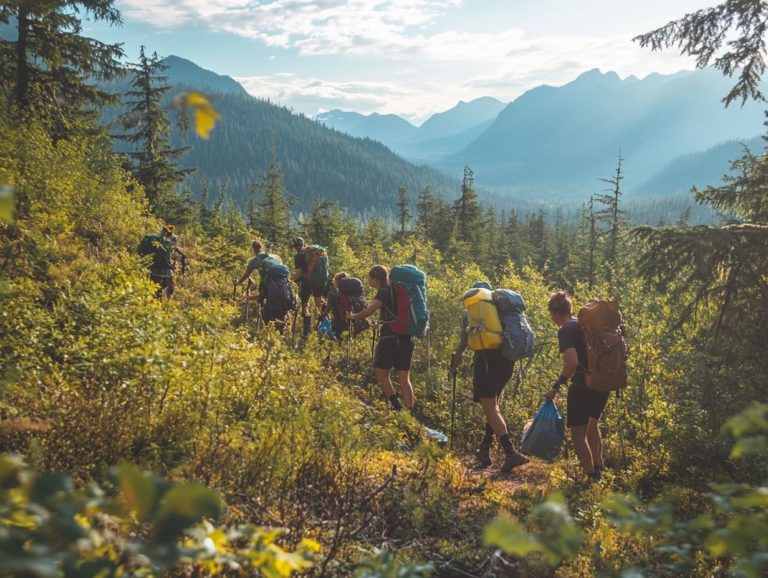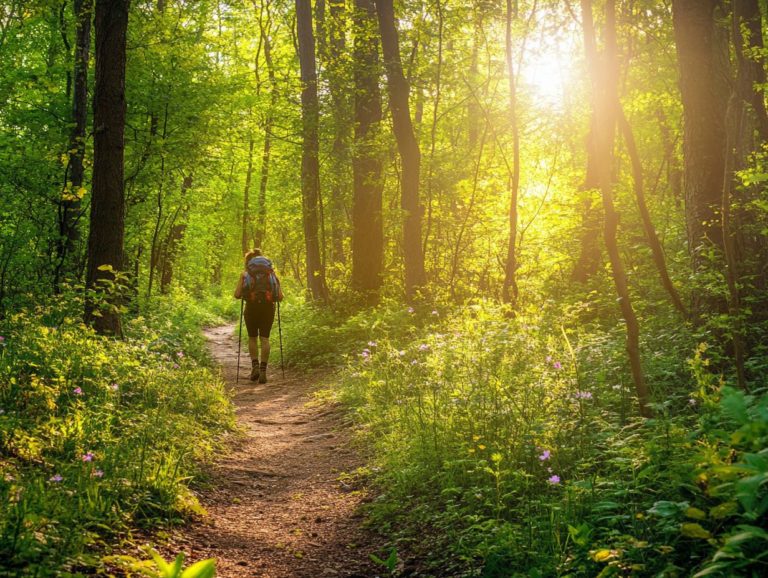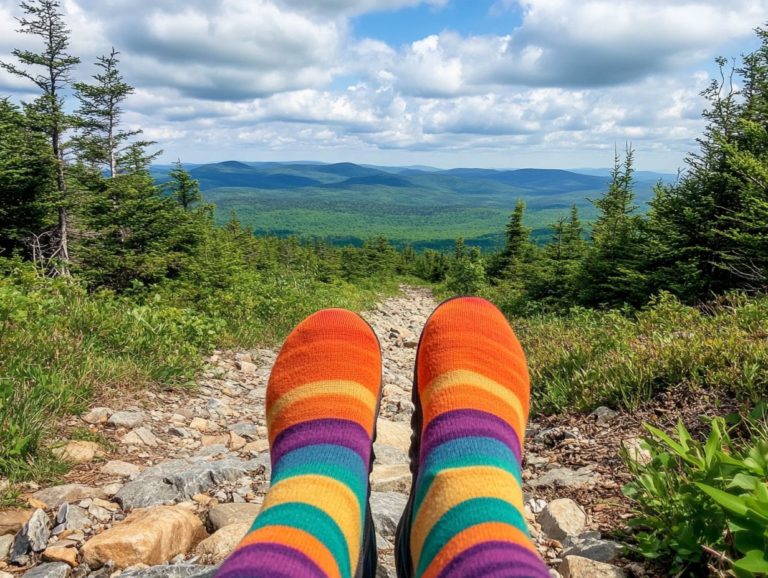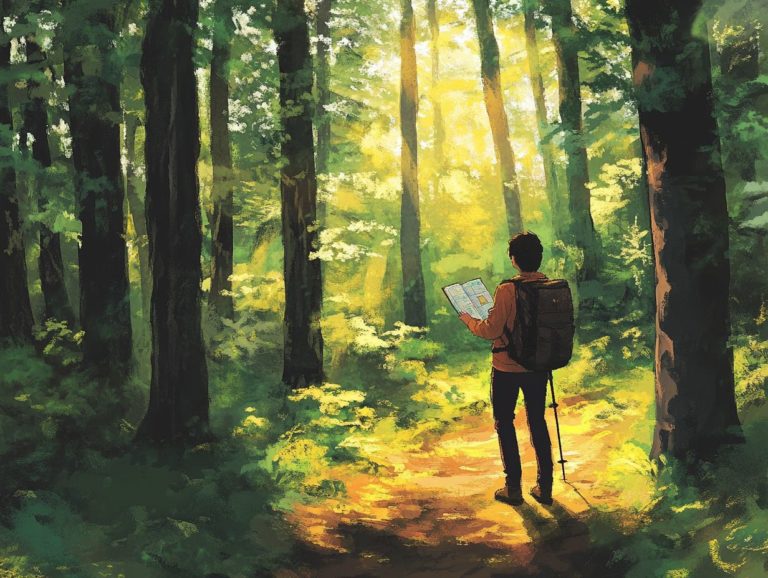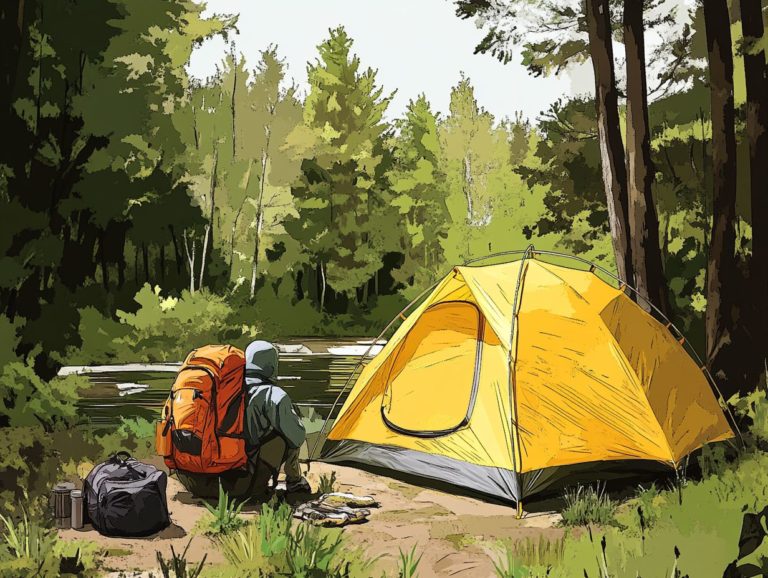How to Avoid Blisters While Hiking
Hiking offers one of the most fulfilling ways to immerse yourself in nature, but nothing can put a damper on your adventure quite like the onset of painful blisters.
Understanding what triggers these pesky nuisances and how to prevent them is crucial for every hiker.
This article delves into the various types and causes of blisters, presents effective preventive strategies you can adopt before and during your hike, and shares valuable tips for treating and caring for blisters both on the trail and once you return home.
Armed with this knowledge, you can fully embrace your hikes, free from the nagging worry of discomfort!
Contents
- Key Takeaways:
- Understanding Blisters
- Preventing Blisters Before Hiking
- During-Hike Strategies to Avoid Blisters
- Treating Blisters on the Trail
- First Aid for Blisters
- Post-hike Care for Blisters
- Frequently Asked Questions
- What are the best ways to prevent blisters while hiking?
- Are there specific types of socks that can help prevent blisters while hiking?
- Can I still get blisters even if I wear proper footwear and socks?
- How can I treat blisters if they occur during a hike?
- Can wearing the wrong size shoes cause blisters while hiking?
- Are there other tips for preventing blisters while hiking?
Key Takeaways:
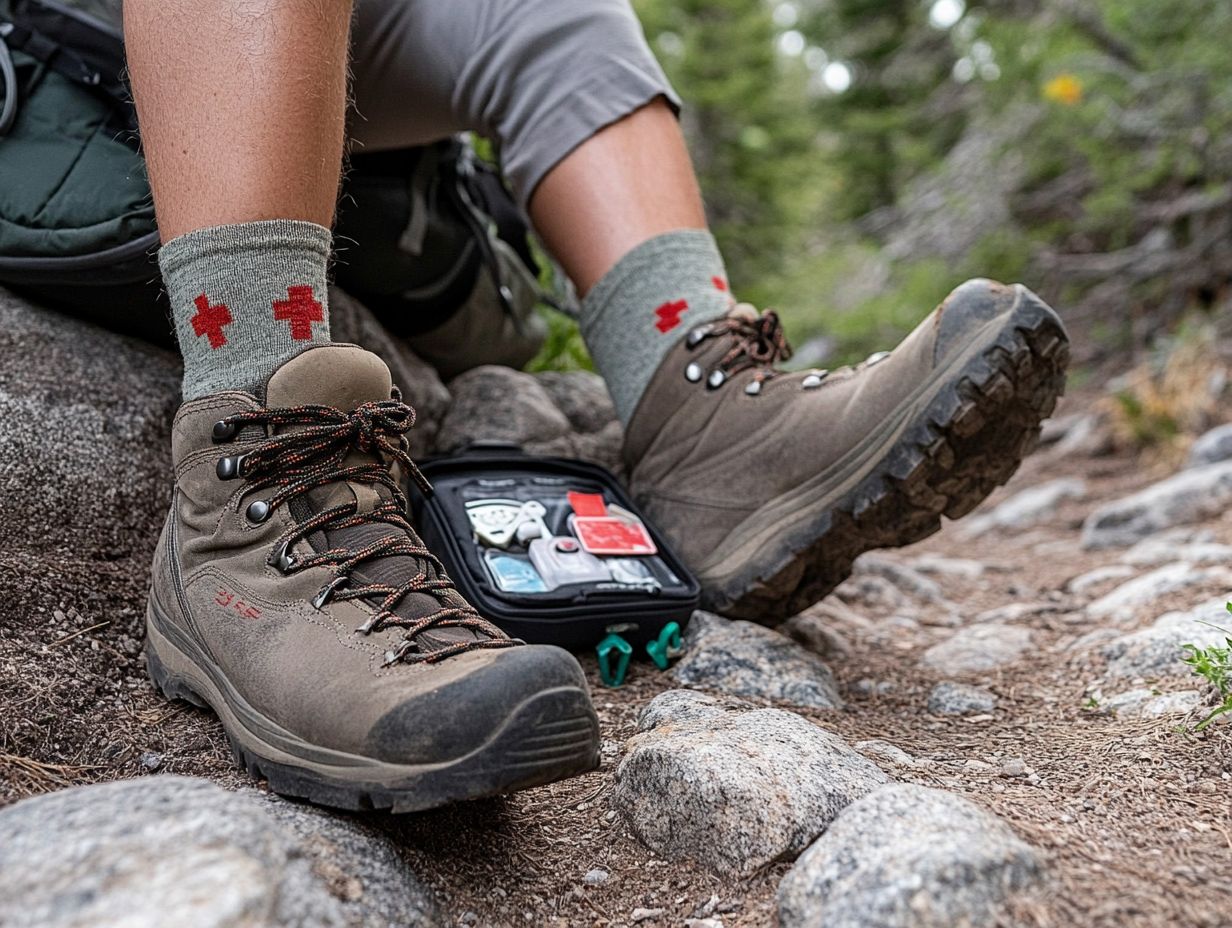
- Choose proper footwear, socks, and hiking trail to prevent blisters before and during your hike.
- Proper foot care and maintenance, such as using moleskin or blister pads, can help prevent and treat blisters on the trail.
- After your hike, clean and treat blisters to prevent infection and promote healing.
Start your hiking journey right by following these tips!
Understanding Blisters
Understanding blisters is essential for anyone who enjoys outdoor activities like hiking. These painful skin conditions can arise from a variety of factors, including friction, moisture, and poor footwear choices.
If left unaddressed, blisters can significantly hinder your hiking experience, leading to discomfort and potential injuries.
Causes and Types of Blisters
Blisters can arise from various factors, primarily friction and moisture, which lead to the separation of skin layers and the accumulation of fluid between them.
Understanding the different types of blisters is vital, especially for outdoor enthusiasts like yourself. Friction often a result of poorly fitted hiking boots creates hot spots on your skin. If you don t address these sensitive areas promptly, they re likely to turn into blisters.
Moisture management is equally important; sweat and humidity can compromise your skin’s natural barrier, making it more vulnerable. Additionally, areas where straps or seams press against your skin can intensify the issue, causing discomfort in specific spots.
By recognizing the early signs of blisters, you can take proactive measures to ensure a comfortable and enjoyable experience on the trails.
Preventing Blisters Before Hiking
Preventing blisters before you set off on your hiking adventure is crucial for ensuring a comfortable experience. Make sure you choose the right boots and socks before your next hike to avoid painful blisters! Your adventure awaits, so prepare wisely!
It all begins with making informed choices about your hiking boots, socks, and foot care preparations.
Selecting the right footwear is essential; poorly fitted hiking boots can lead to excessive friction, hot spots, and, inevitably, blisters. Using ways to stay comfortable while hiking right before you hit the trails can keep your feet dry and significantly reduce the risk of irritation and blister formation.
Proper Footwear and Socks
Choosing the right footwear and socks is essential for preventing blisters during your hikes, as the perfect combination can significantly reduce friction and moisture buildup.
Selecting ideal hiking boots is crucial for ensuring a comfortable outdoor experience. Features like waterproofing protect your feet from unexpected weather, while a proper fit prevents unnecessary movement that can lead to painful hot spots.
Additionally, the importance of toe socks, such as Injinji, and liner socks cannot be overstated; they add an extra layer of cushioning and enhance moisture management, keeping your feet dry and minimizing the risk of blisters.
This thoughtful approach to sock layering beautifully complements the advantages of high-quality hiking boots, highlighting that investing time in choosing the right gear is essential for a successful adventure.
Pre-Hike Foot Care
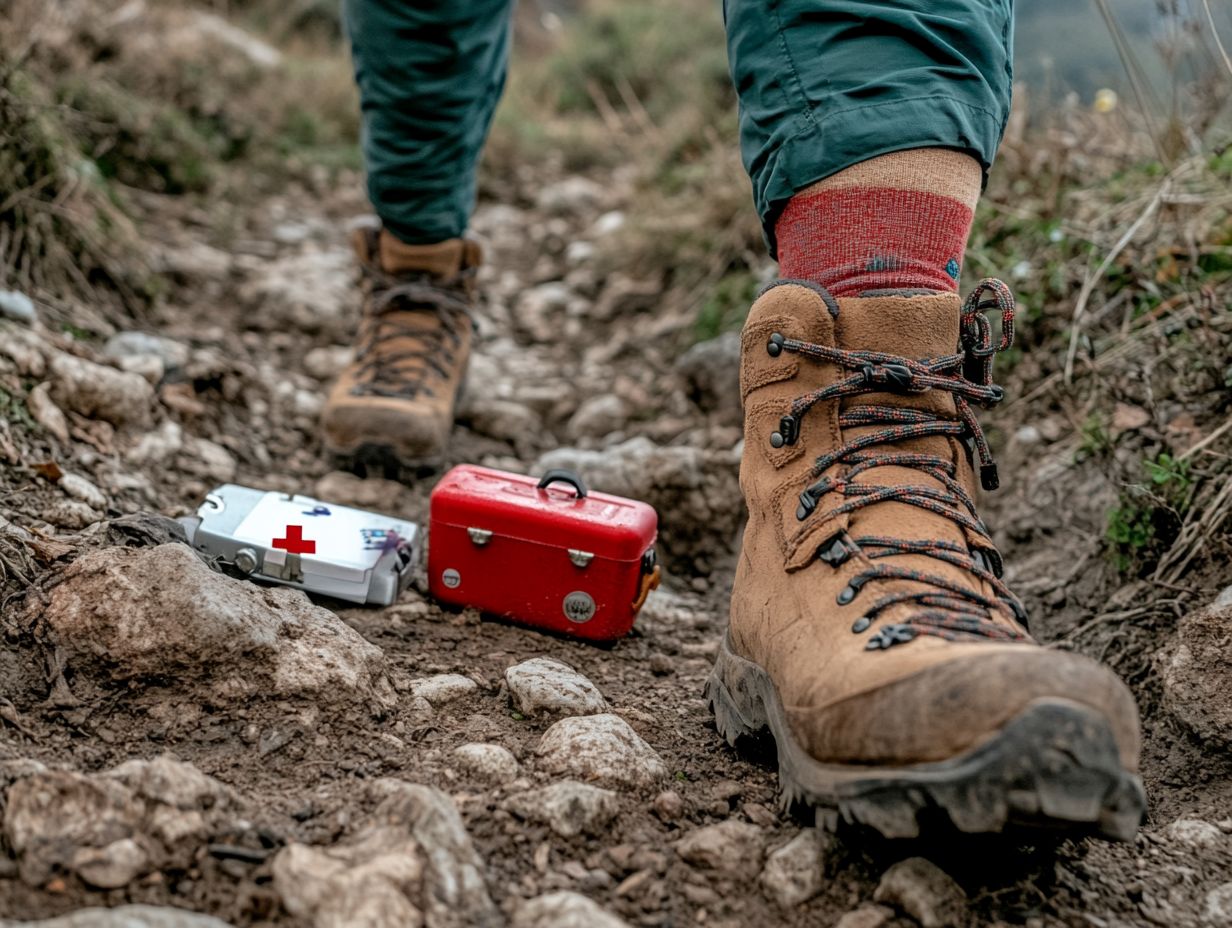
Pre-hike foot care helps prevent blisters. Start with the right socks and use anti-chafing products like Body Glide to protect your skin.
Choosing socks that keep your feet dry and fit snugly without being too tight is crucial. This helps minimize friction against your skin.
Apply anti-chafing products like Body Glide or KT Tape before you hit the trails. This adds an extra layer of protection, sealing off areas prone to blisters and irritation.
Make sure your hiking boots fit well and are broken in properly. This enhances your comfort and reduces unnecessary movement.
Investing in quality foot care gear not only improves your hiking experience, but it also gives you a sense of preparedness that elevates your entire adventure in nature!
During-Hike Strategies to Avoid Blisters
While hiking, implementing effective strategies to prevent blisters is essential. Even the best preparations can fall short without consistent attention to foot care and moisture management.
Regularly check your feet for any signs of irritation. Spotting issues early gives you the chance to act before blisters form.
Adjust your lacing techniques and manage moisture levels. Be aware of your foot comfort to ensure a pain-free hiking experience!
Proper Foot Care and Maintenance
Proper foot care during hikes is vital to prevent blisters. Pay attention to hot spots and pressure points before they escalate into painful injuries.
By focusing on foot hygiene, you can significantly reduce discomfort and injury risks on the trail. Regularly check for signs of wear, like red areas or swelling, so you can intervene promptly.
Adjusting your footwear whether that means switching to dry socks or ensuring your shoes fit well can make a world of difference!
If a blister forms, applying moleskin or a blister pad offers immediate relief and protection. Keep antiseptic wipes handy to clean any irritated areas, ensuring healthy feet throughout your journey.
Choosing the Right Hiking Trail
Choosing the right hiking trail can shape your adventure. Look for smooth, even trails to reduce foot fatigue and the risk of blisters.
Consider the weather; opting for trails that aren t muddy or overly wet can prevent discomfort from the start!
Invest in proper footwear, like well-fitted hiking boots paired with dry socks. This combination can be a game-changer in your quest to ward off blisters.
Ensure your gear is right for the trail. Using cushioned insoles provides extra protection for your feet, allowing you to fully enjoy your outdoor adventures!
Treating Blisters on the Trail
Treating blisters on the trail is crucial for a comfortable hiking experience. Knowing first aid can truly enhance your journey!
First Aid for Blisters
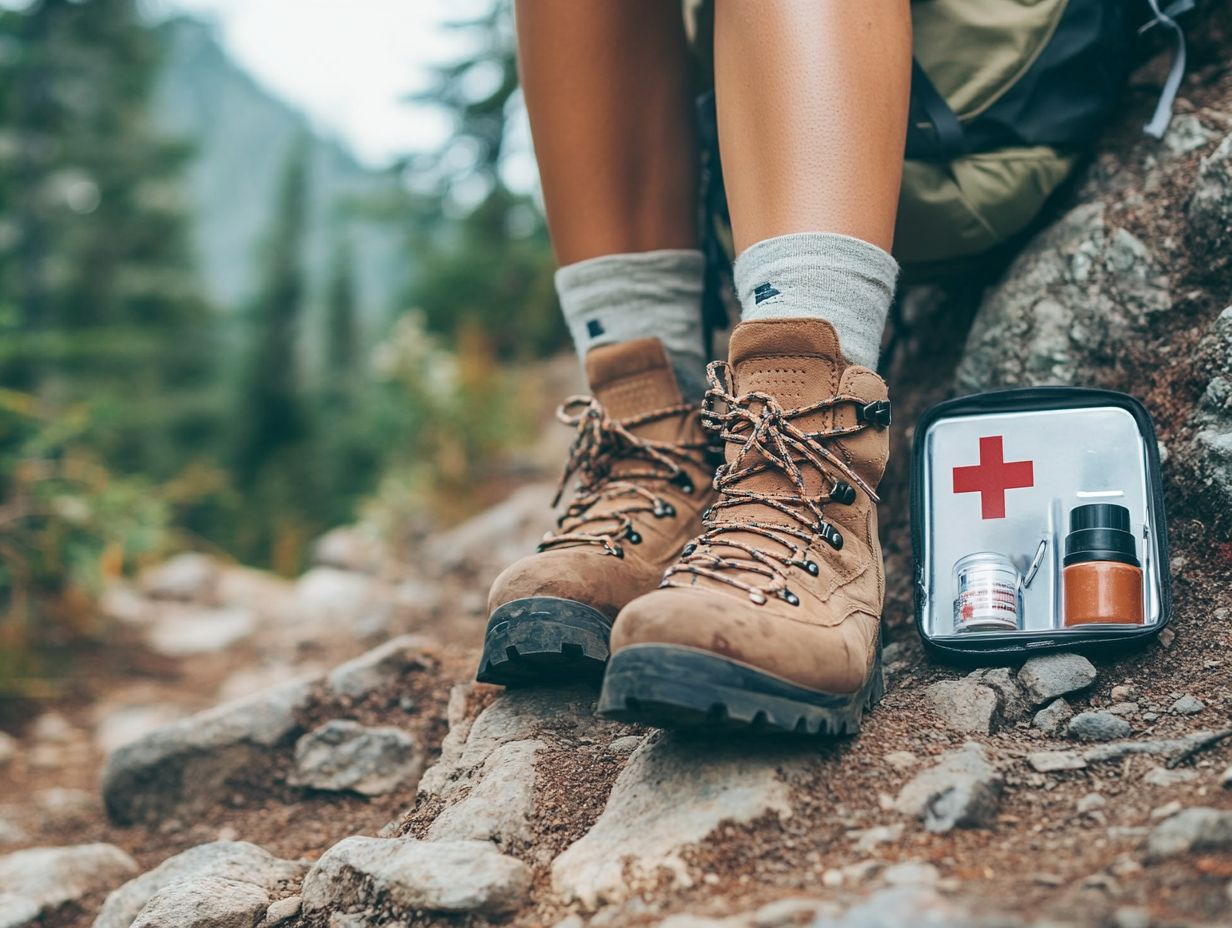
First aid for blisters involves important steps to ensure proper care, allowing you to continue your adventure with minimal discomfort.
- Begin by gently cleaning the affected area with soap and water. Remove any dirt or debris carefully.
- Once dry, apply a protective layer like moleskin or medical tape. This cushions the blister and helps prevent further irritation.
- For immediate relief, use products such as Compeed, which create a moist environment to promote healing.
Watch for signs of infection, such as increased redness or pus. These require prompt attention to avoid complications.
By following these steps, you can effectively manage blisters and promote healing, allowing you to fully enjoy outdoor activities with confidence.
Post-hike Care for Blisters
Post-hike care for blisters is a vital step in your recovery process. Address damage promptly to prevent complications like infection.
Taking this seriously can safeguard your health and ensure a smoother journey ahead.
Cleaning and Treating Blisters
Cleaning and treating blisters effectively after your hike is crucial for proper healing and minimizing infection risk.
After a long trek, give the affected area the attention it deserves. Start by gently cleansing the blister and surrounding skin with mild soap and warm water. Be careful not to cause further irritation. Use sterile materials, like gauze or cotton swabs, to reduce exposure to bacteria.
After cleaning, apply blister care products such as medical tape or moleskin. This creates a protective barrier that encourages healing and prevents friction while moving. This method alleviates discomfort and aids in your recovery process.
Preventing Infection
Preventing infection in blisters is essential. Neglecting this can lead to serious health complications. Recognize early signs of infection for timely intervention. Keep a close watch on any blisters that appear.
If you notice symptoms like increased redness, warmth, swelling, or pus production, seek immediate attention.
Effective management involves keeping the area meticulously clean and applying a suitable antiseptic to ward off lurking pathogens. Don t underestimate a sterile bandage, as it can provide additional protection and reduce the chances of complications that might require medical treatment.
Frequently Asked Questions
What are the best ways to prevent blisters while hiking?
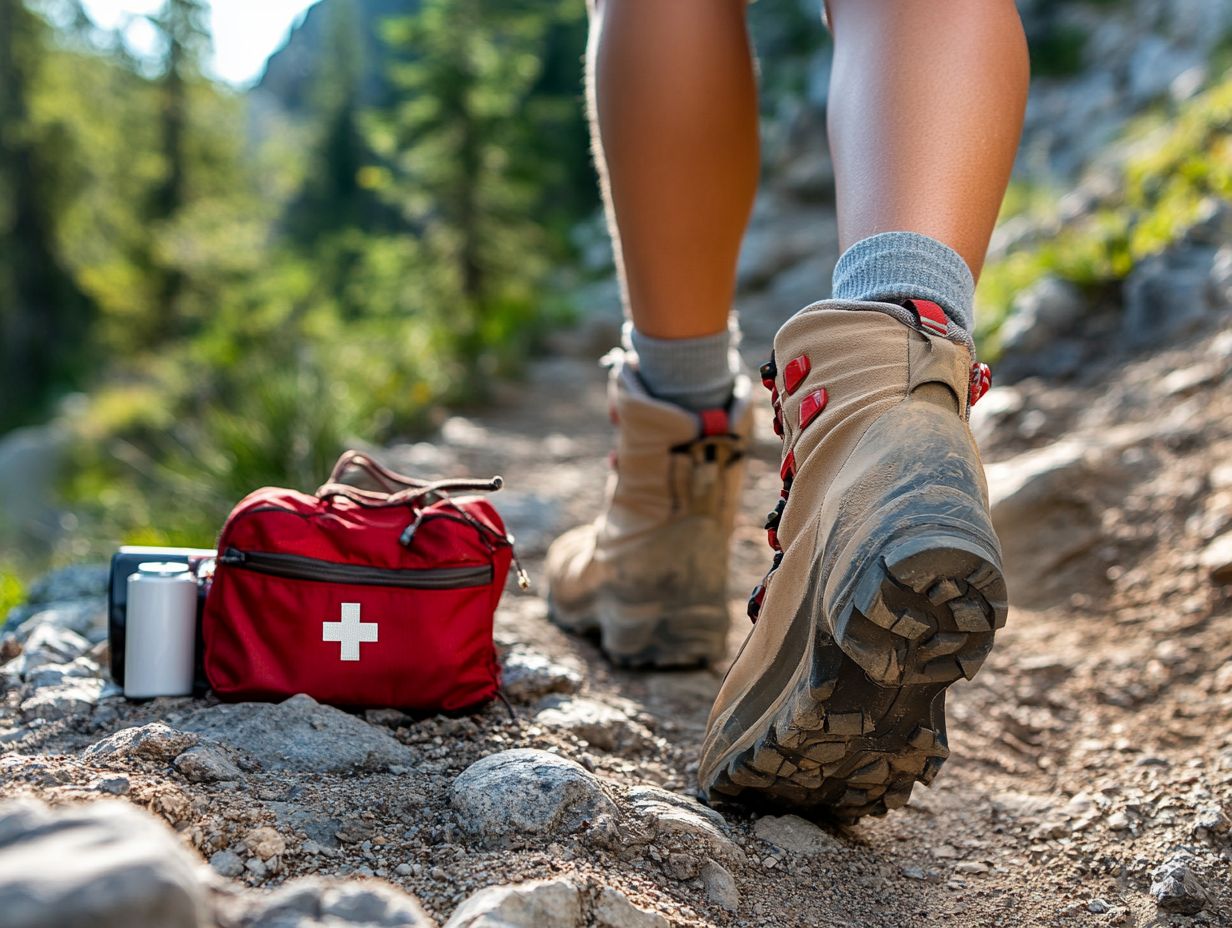
- Choose well-fitting and breathable footwear: Properly fitting shoes or hiking boots with good ventilation reduce friction and moisture.
- Break in new shoes before a long hike: New shoes may cause blisters due to stiff materials, so wear them for short periods first.
- Use moisture-wicking socks: These socks help keep your feet dry and prevent blisters caused by moisture buildup.
- Keep your feet dry: If your feet get wet from sweat or water, take a break to dry them and change into fresh socks.
- Apply blister prevention products: Specialized products like blister pads or moleskin offer a protective layer between your skin and shoes.
- Take breaks and change your socks: Regular breaks allow your feet to rest, and changing into a clean, dry pair of socks can help prevent blisters.
Prepare for your next hike confidently by following these tips!
Are there specific types of socks that can help prevent blisters while hiking?
Yes, certain socks can help. Look for moisture-wicking socks made from wool or synthetic materials.
These socks often have extra padding in areas that are prone to blisters, like the heel and toes.
Can I still get blisters even if I wear proper footwear and socks?
Blisters can still happen, even with the right gear. Listen to your body and take breaks to prevent blisters from worsening.
Experiment with different blister prevention products to find what works best for you.
How can I treat blisters if they occur during a hike?
Treat blisters properly to avoid infection. Clean the area with soap and water, then cover it with a blister pad or moleskin.
If the blister has popped, keep it clean and apply antibiotic ointment. Seek medical help for severe pain, swelling, or redness.
Can wearing the wrong size shoes cause blisters while hiking?
Yes, improper shoe size increases the risk of blisters. Shoes that are too small cause friction, while oversized shoes allow your feet to slide around.
Are there other tips for preventing blisters while hiking?
Wear comfortable, breathable clothing and keep your toenails trimmed. Avoid rough or uneven terrain.
Stay hydrated and properly fuel your body to prevent fatigue, which can lead to blisters.

